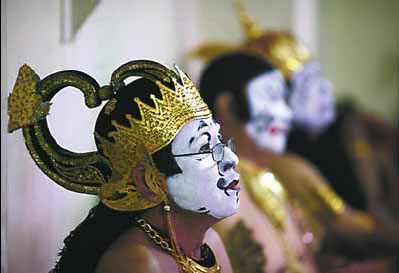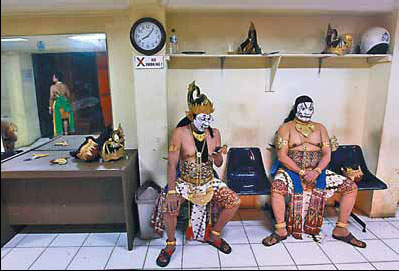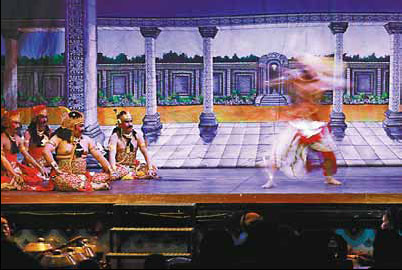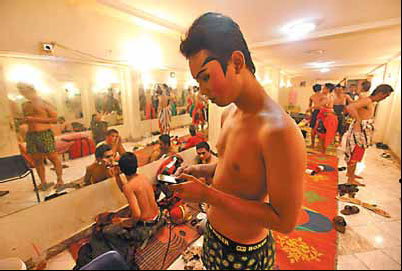Painted faces
 |
|
Established more than 40 years ago, Wayang Orang Bharata is now one of the last surviving professional Wayang Orang troupes in Indonesia. The shows, once only for palace audiences, evolved from traditional puppetry, with the "puppets" here being humans. Photos by Beawiharta / Reuters |
 |
|
With their mask-like makeup and headdress, dancers take the stage as shadow puppets. |
 |
|
Dancers sit backstage as they wait to perform at the Bharata Theater in Jakarta. |
 |
|
In Wayang Orang, dialogue and narration are delivered in Javanese. |
 |
|
A young Wayang Orang dancer checks in with the real world before taking the stage in fantasy. |
Reuters' photographer Beawiharta follows the colorful faces and even more colorful costumes.
Wayang Orang or Human Theater is attracting renewed interest in Indonesia, with more young actors joining the profession. The immemorial art was once restricted to aristocrats and can be traced as far back as the ninth century in Indonesia. Often compared to Western-style opera, the traditional Javanese stage performance is filled with dances, songs, exaggerated acting, jokes and fighting scenes. Wayang Orang performers typically go onstage without script, and are expected to improvise their own dialogue. The stories are usually based on the Hindu epics Mahabharata and Ramayana, performed to the music of a gamelan (percussion) ensemble. The photos on this page are of the Bharata group - one of the three remaining troupes in Indonesia.
















